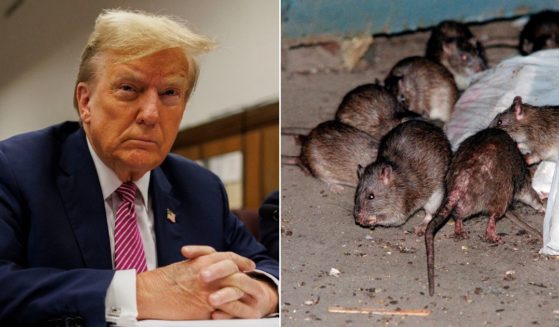Scientists: New Cure for Baldness Discovered in McDonald's French Fries
A new study shows that the cure for baldness could lie within McDonald’s fries, sadly not by eating them.
Japanese scientists have found a “simple” method to regrow hair on mice and say that it could likely work on humans too.
A stem cell research team from Yokohama National University used the silicone added to McDonald’s fries to stop cooking oil from frothing, called dimethylpolysiloxane, to regrow hair on mice.
The study published in Science Daily last week focuses on moving hair follicles to areas on the mouse without hair, according to USA Today.
The researchers used the dimethylpolysiloxane as part of an “oxygen-permeable” solution and created “5,000 HFGs simultaneously, and report(ed) new hair growth from the HFGs after transplantation into mice.”
“The key for the mass production of HFGs was a choice of substrate materials for culture vessel,” Professor Junji Fukuda said in the press release, according to Business Insider. “We used oxygen-permeable dimethylpolysiloxane at the bottom of culture vessel, and it worked very well.”
Business Insider pointed out that the chemical on its own does not trigger hair growth, so eating McDonald’s fries will probably not help with hair growth.
“These self-sorted hair follicle germs were shown to be capable of efficient hair-follicle and shaft generation upon intracutaneous transplantation into the backs of nude mice,” Fukuda said in the study, according to USA Today.
Researchers added that more studies will need to be done, but their findings are “promising” for regrowing human hair.
“This simple method is very robust and promising,” Fukuda said. “We hope this technique will improve human hair regenerative therapy to treat hair loss such as androgenic alopecia (male pattern baldness).”
“In fact, we have preliminary data that suggests human HFG formation using human keratinocytes and dermal papilla cells,” he added.
Twitter users reacted to the study.
https://twitter.com/WearySky/status/960851724058742785
According to NBC News, McDonald’s buys 3.4 billion pounds of U.S. potatoes annually to make their french fries.
Truth and Accuracy
We are committed to truth and accuracy in all of our journalism. Read our editorial standards.












